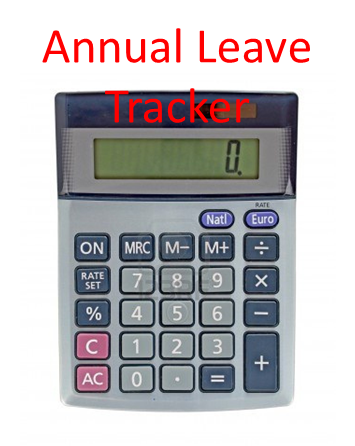Effective Communication in the Workplace.
Employees and the people on the ground in general, are an invaluable source of information for employers. Whether it is positive or negative, employees can provide a whole host of important feedback for your business - if you take the time to listen to and interpret their comments they can be a real asset to you.
 Conducting regular meetings between employees and managers is a good way to keep lines of communication open. However, sometimes people are reluctant to speak out in an open forum, particularly where they have something negative to say or where they have an issue involving someone else who is included in the meeting.
Employee surveys are an ideal way for employees to share their opinions about their job and work environment etc. Confidential surveys tend to encourage honesty and can prove to be of great assistance to employers. Employee participation should be encouraged. Employees will feel as though their input is valued if attention is paid to their suggestions/recommendations. If action is taken by the employer as a result of employee opinions, morale amongst workers can be increased and relationships between the employer and their employees can be drastically improved. This has a positive effect on productivity.
Similarly, as employees leave the company; an exit interview should be carried out. This can be very beneficial for the employer as it can, for instance, give the employer an insight in to the reasons behind the employee’s departure. It can also highlight other issues that exist within the business – issues that management may not necessarily already be aware of. It can also reveal what is working well and where resources should be focused. People tend to be more open and honest about what they are feeling when they know that divulging the information will not have any negative bearing on them.
Not asking the opinion of a departing employee is a wasted opportunity.
It is important to give employees the opportunity to elaborate on their answers and to encourage them to give you as much information as possible – the more information that they impart the better. Leave an additional space for them to comment on issues that you may not have thought to include.
Here are some examples of questions that should be included in an exit interview:
Conducting regular meetings between employees and managers is a good way to keep lines of communication open. However, sometimes people are reluctant to speak out in an open forum, particularly where they have something negative to say or where they have an issue involving someone else who is included in the meeting.
Employee surveys are an ideal way for employees to share their opinions about their job and work environment etc. Confidential surveys tend to encourage honesty and can prove to be of great assistance to employers. Employee participation should be encouraged. Employees will feel as though their input is valued if attention is paid to their suggestions/recommendations. If action is taken by the employer as a result of employee opinions, morale amongst workers can be increased and relationships between the employer and their employees can be drastically improved. This has a positive effect on productivity.
Similarly, as employees leave the company; an exit interview should be carried out. This can be very beneficial for the employer as it can, for instance, give the employer an insight in to the reasons behind the employee’s departure. It can also highlight other issues that exist within the business – issues that management may not necessarily already be aware of. It can also reveal what is working well and where resources should be focused. People tend to be more open and honest about what they are feeling when they know that divulging the information will not have any negative bearing on them.
Not asking the opinion of a departing employee is a wasted opportunity.
It is important to give employees the opportunity to elaborate on their answers and to encourage them to give you as much information as possible – the more information that they impart the better. Leave an additional space for them to comment on issues that you may not have thought to include.
Here are some examples of questions that should be included in an exit interview:
- How long were you employed by the company?
- Were you in a supervisory role?
- Were you a full-time or part-time employee?
- Did you resign or was your employment terminated? If other, please explain.
- If you resigned, what were your reasons for leaving the company? Please list all reasons. (E.G: Geographical Location, Family Circumstances, Career Development etc.)
- If you left for a new position, was the salary offered greater than your salary here? If so, please reveal the approximate percentage difference.
- Can you explain why the new position (if relevant) was more desirable than your position here?
- What might have motivated you to remain in your current position? (E.G: Improved Benefits, More Time-Off, Less/More Travel, Promotional Opportunities etc.)

- What impacted your decision to leave the company? (E.G: Lack of Equipment/Information, Work that did not Challenge, Too much/Too little work, Pressure, Remuneration/Benefits, Other Personnel, Relationship with Supervisor/Co-workers, Morale, Teamwork, Goals, Harassment, Organisational Structure, Physical Environment etc.)
- Can you please tell us about your positive experiences with the company? (E.G: Benefits, Hours, Facilities, Your Supervisor, Co-Workers, Personnel Practices/Policies, Physical Environment/Work Area, Development Opportunities, Level of Support etc.)
- Do you feel as though you received adequate consideration for positions that you applied for? Please explain your answer.
- Do you feel as though your work was fairly evaluated through performance reviews during your employment? Please explain your answer.
- Do you feel as though your monetary recognition was in line with your performance? Please explain your answer.
- Was the frequency/level of your recognition appropriate? Please explain your answer.
- Do you feel as though you received adequate training for your position and the duties you were required to carry out? Please explain your answer.
- Did you have adequate resources, equipment, support and information to carry out your job well? Please explain your answer.
- Was your work environment free of sexual, religious, age and/or racial discrimination? If no, please explain in detail.
- Were you satisfied with the quality and quantity of feedback received from your supervisor about your performance? Please explain your answer.
- Were you kept well informed on what was expected of you in the workplace? Please explain your answer.
- Did you feel free to discuss your career development with your supervisor? Please explain your answer.









 Bullying or harassment isn’t always obvious – in fact it can come in many shapes and forms – some examples are:
•Social exclusion or isolation
•Damaging someone’s reputation through gossip or rumour
•Any form of intimidation
•Aggressive or obscene language or behaviour
•Repeated requests for unreasonable tasks to be carried out
Employers Beware:
Under current Irish employment legislation (The Employment Equality Acts 1998-2011) companies are accountable when it comes to bullying and harassment in the workplace or workplace disputes. It is vital for employers to be mindful of the legislation as companies are answerable for the actions of employees, suppliers and customers even in cases where the company is not aware that bullying or harassment is taking place.
To defend itself a company must illustrate how it did everything reasonably practicable to prevent bullying and / or harassment from taking place in the workplace. The company must also show that when an instance of bullying or harassment occurred the company took immediate, fair and decisive action.
There is a huge risk of exposure if companies do not adhere to the strict Regulations. Those found in violation of the Act may be liable for fines and in severe circumstances imprisonment on summary conviction. Companies can also end up paying out large sums in compensation.
Bullying creates a very hostile work environment and can negatively affect employee performance – It can lead to disengagement and low levels of morale. It can also cause a company to lose key members of staff. Bullying can affect both the safety and the health of employees – this violates the Safety, Health and Welfare at Work Act 2005.
It is abundantly clear that it is in the best interest of all stakeholders to prevent bullying or harassment of any form in the workplace.
In order to avoid bullying and harassment an employer should include harassment-related policies and procedures in the Employee Handbook – A Dignity at Work Policy should be communicated clearly to employees. This will clarify what is expected of employees and what the protocol/repercussions are if bullying/harassment does occur.
Bullying or harassment isn’t always obvious – in fact it can come in many shapes and forms – some examples are:
•Social exclusion or isolation
•Damaging someone’s reputation through gossip or rumour
•Any form of intimidation
•Aggressive or obscene language or behaviour
•Repeated requests for unreasonable tasks to be carried out
Employers Beware:
Under current Irish employment legislation (The Employment Equality Acts 1998-2011) companies are accountable when it comes to bullying and harassment in the workplace or workplace disputes. It is vital for employers to be mindful of the legislation as companies are answerable for the actions of employees, suppliers and customers even in cases where the company is not aware that bullying or harassment is taking place.
To defend itself a company must illustrate how it did everything reasonably practicable to prevent bullying and / or harassment from taking place in the workplace. The company must also show that when an instance of bullying or harassment occurred the company took immediate, fair and decisive action.
There is a huge risk of exposure if companies do not adhere to the strict Regulations. Those found in violation of the Act may be liable for fines and in severe circumstances imprisonment on summary conviction. Companies can also end up paying out large sums in compensation.
Bullying creates a very hostile work environment and can negatively affect employee performance – It can lead to disengagement and low levels of morale. It can also cause a company to lose key members of staff. Bullying can affect both the safety and the health of employees – this violates the Safety, Health and Welfare at Work Act 2005.
It is abundantly clear that it is in the best interest of all stakeholders to prevent bullying or harassment of any form in the workplace.
In order to avoid bullying and harassment an employer should include harassment-related policies and procedures in the Employee Handbook – A Dignity at Work Policy should be communicated clearly to employees. This will clarify what is expected of employees and what the protocol/repercussions are if bullying/harassment does occur.






















